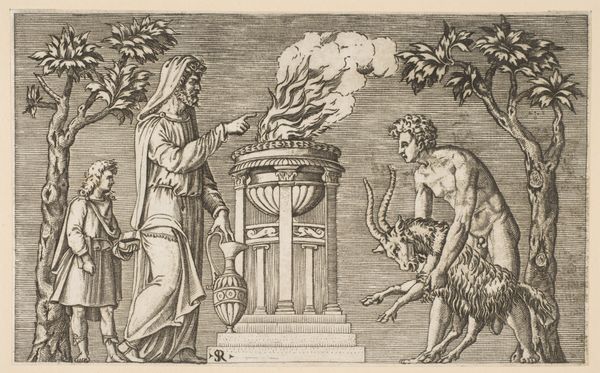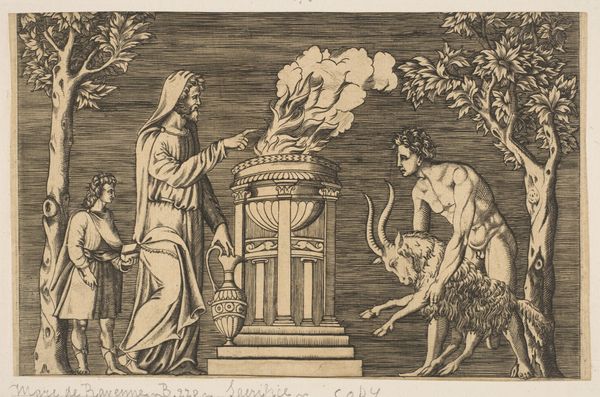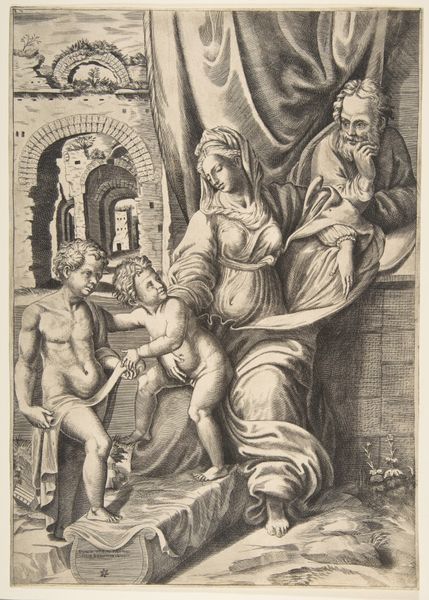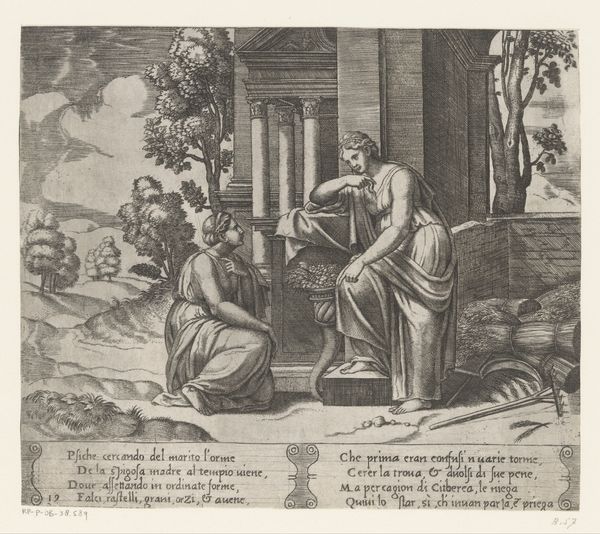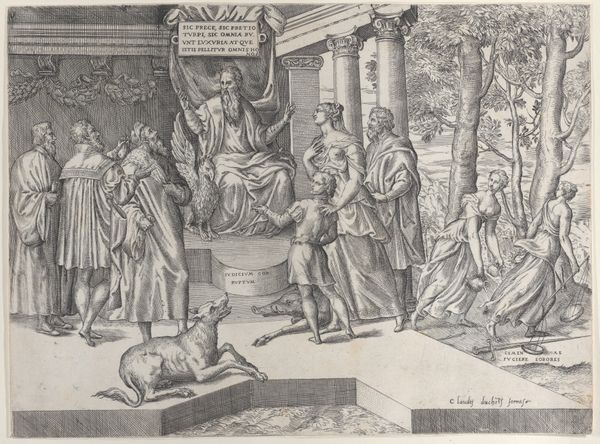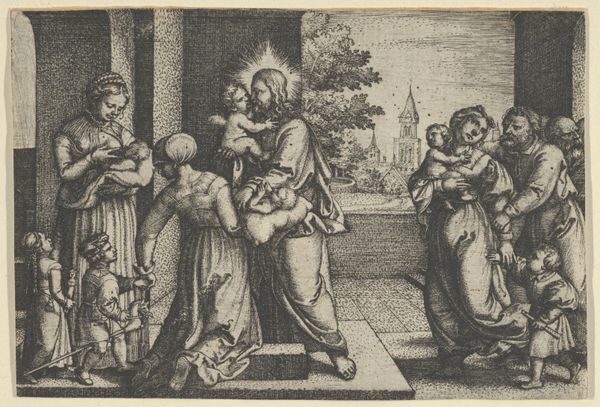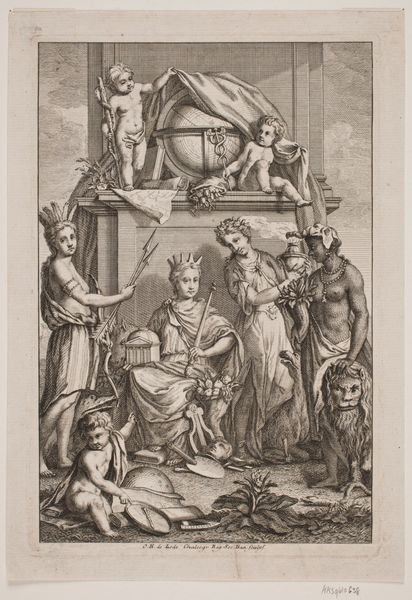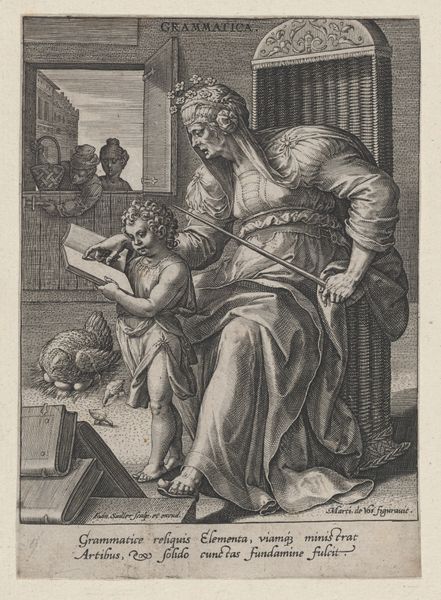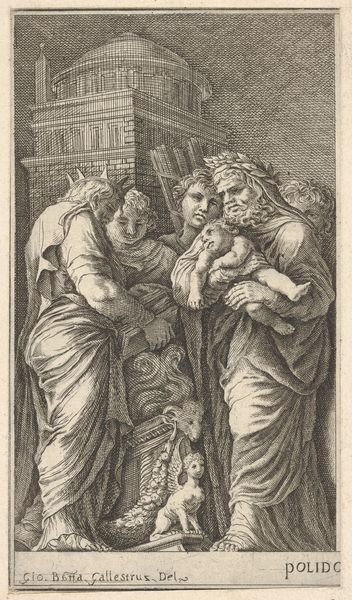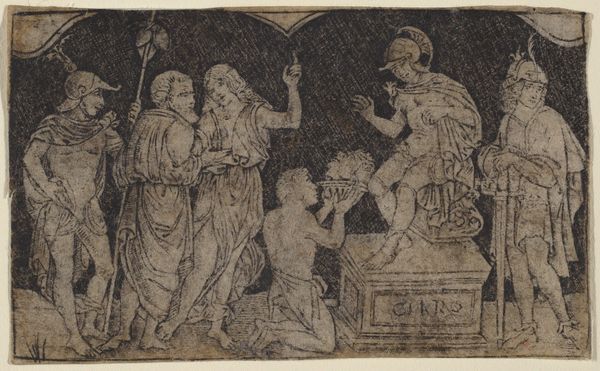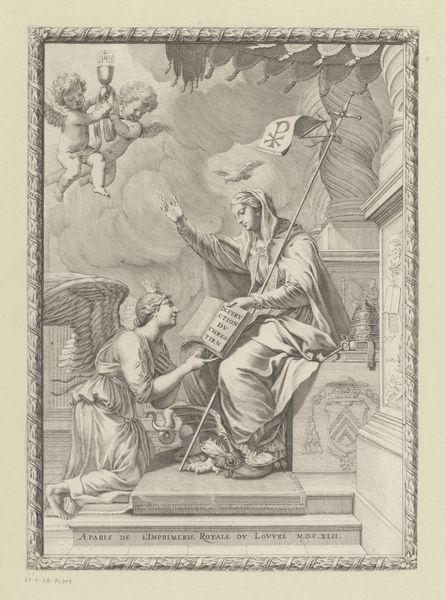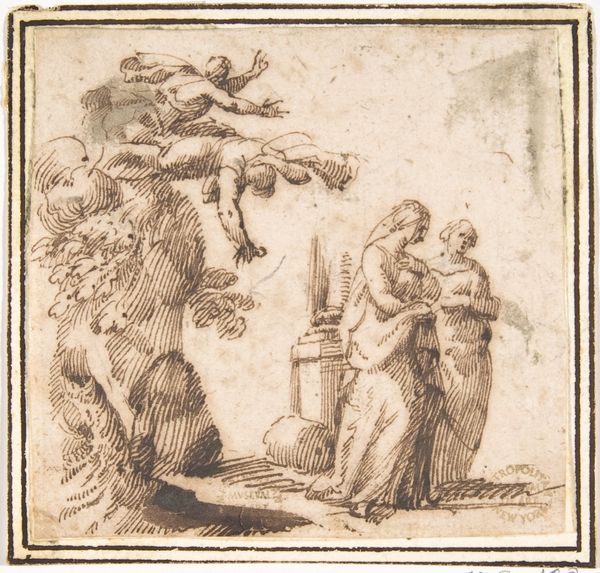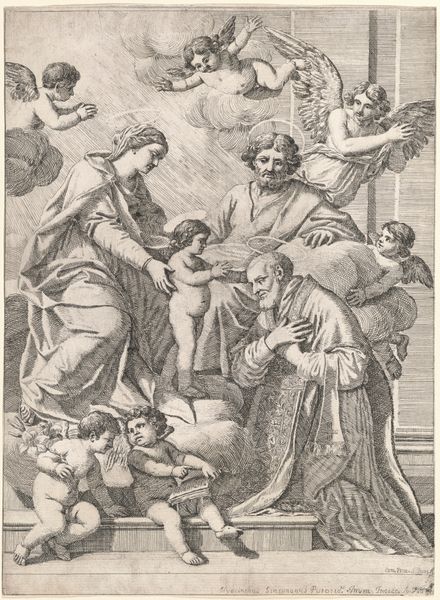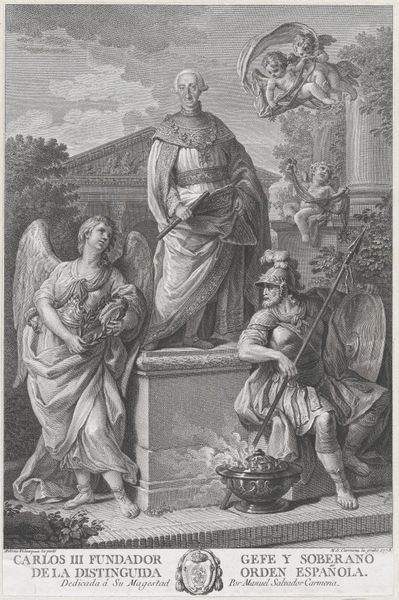
Sacrifice of a Swan, from "Ex Antiquis Cameorum et Gemmae Delineata/ Liber Secundus/et ab Enea Vico Parmen Incis" 1599 - 1622
0:00
0:00
drawing, print, engraving
#
drawing
# print
#
classical-realism
#
figuration
#
history-painting
#
italian-renaissance
#
engraving
Dimensions: plate: 3 7/16 x 4 7/8 in. (8.8 x 12.4 cm)
Copyright: Public Domain
Curator: Welcome. Here we have an engraving from between 1599 and 1622, attributed to an anonymous artist. It's called "Sacrifice of a Swan," and comes from a series called "Ex Antiquis Cameorum et Gemmae Delineata," found today at the Metropolitan Museum of Art. Editor: A swan! Getting thrown into the barbeque like that! Honestly, my first thought is, this print looks utterly bleak. What did that poor swan do to deserve this? Curator: The print draws its subject matter from ancient cameos, specifically seeking to evoke classical sacrifice. It engages with the aesthetics that Italian Renaissance artists admired in the antique world. Think proportion, balance, but also... ceremony. Editor: Ceremony, yes, but there’s also a theatrical feeling to the poses, even with just lines on paper. That guy blowing on his double flute, seems like the ancient world's DJ setting a morbid mood. Look, it is quite graceful though, the figures draped in all that fabric, arranged like they’re posing for some epic drama. Curator: Well, music and ritual were deeply entwined, as you suggest. Note the altar, adorned with garlands. An attendant prepares the offering – in this case, our feathered friend. The precise identities are difficult to ascertain definitively. Editor: Makes you think though. In this picture it might as well be all about power. That bird, the most beautiful of creatures getting an ugly ending so that those folks can strut about and look important? I think the artist captures how, in some respects, we are still staging the same shows. Curator: Yes, one reading might focus on the mechanics of social hierarchy and power dynamics as seen reflected through a Renaissance lens gazing at antiquity. It points to how artistic interpretation inevitably refracts existing norms of its moment. Editor: All that line work feels so deliberate and cold. Not in a bad way, more like seeing a crime scene, very elegantly documented. But it does lend a feeling of detachment, doesn’t it? Making the brutal scene, well, more digestible perhaps? Curator: Absolutely. The calculated rendering allows for consideration, the cool precision a sort of shield. In its attempt to translate antique ideals of sacrifice, we can glean social dimensions about art making then and now. Editor: Thank you. Seeing the echoes of those times in our own... it’s spooky, beautiful and tragic, just like that poor swan.
Comments
No comments
Be the first to comment and join the conversation on the ultimate creative platform.
